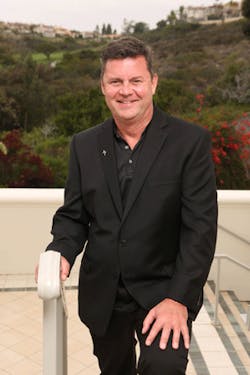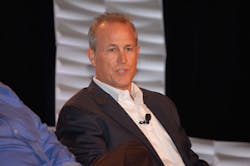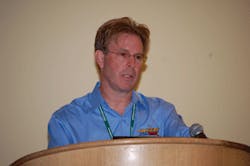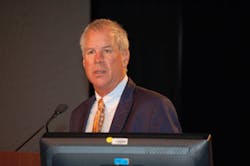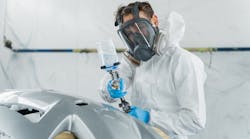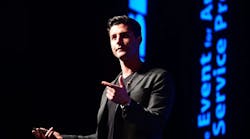What’s on the minds of MSOs? For the second year, ABRN convened an “MSO Roundtable,” bringing together a panel to discuss some of the key issues facing larger collision repair organizations.
Here are some of the highlights of this year’s “MSO Roundtable,” which included four MSOs and an association executive. Some responses were edited for length or clarity.
ABRN: How much do you specialize by location, in terms of segmenting work to particular locations based on DRP, vehicle brand, type/degree of damage, etc.?
Randy: Because we’ve been involved in auto manufacturer certifications for a long time, we feel there are a lot of efficiencies gained by specializing. We can’t know everything about every single car on the road. When you go into the heath care community, it’s all specialization. The collision repair industry has been more of a trauma center, which isn’t necessarily most efficient. What we try to do as much as possible is to segment vehicles to our facilities by the make of car. We see a lot of opportunity there. The challenge is to consistently deliver enough Hondas to one facility, for example, to maximize that facility’s footprint.
Byers: We’ve created a hub-and-spoke system in most of our major metro markets for specific types of repairs. In the world of aluminum repair, for example, it doesn’t make sense for us right now to have our whole network doing structural aluminum repair. So in our major metro areas, we may have three stores who raised their hand and said, ‘I want to be structural repair for Carstar in this market.’ They’ve invested in the process and spent the capital for the technology, and the rest of the stores in that market can load-level that work to those locations.
Beavers: We have a heavy-hit shop in our market. Being on the East Coast, we’ll have times in the winter when we’re flooded with heavier hits. One of our facilities specializes in the heavy-hits, the body-over-frame swaps, the large suspension and structural repair jobs. Not that the other stores can’t do that work, but that shop is our outlet when, like in the winter of 2014, we get 11 storms within six weeks. The other niche we see in our market that we think is important and sometimes overlooked is a fleet-dedicated location. Often fleets don't get priority in typical shops. So we have one fleet location with staff that also experts on the front-end process, which allows us to offer more consistency for the fleet managers.
Byers: I think one of the other interesting things we see in terms of specialization is the progression of the insurance carriers toward having full use of vehicle telematics. When they can get information up front about what type of collision that particular car has been in, they’ll be able to direct through their claims process that vehicle to perhaps an express shop or a heavy-hit shop or an aluminum-certified shop or an OEM-certified shop. I think that’s where you’ve gong to see segmentation really take off, when you have a combination of shops segmenting and the insurance carriers able to provide specific work to specific locations that specialize in that.
Risley: I think insurers are already lining themselves up to start the segmentation piece because there is very specific equipment and tooling and training needed to perform specific repairs. There’s exposure and liability for insurers if they’re recommending shops that don’t meet that criteria.
ABRN: That leads into the next question: More of the automakers have launched collision shop certification programs. How big a role do you foresee automakers playing in consumer shop choice in the coming years?
Risley: I think the automakers are going to have a significant influence on where cars are actually going. I think the whole reason for the certification programs is to ensure their customers’ vehicles are being repaired properly. One of their concerns is brand-loyalty. If their customers’ cars aren’t being repaired properly, there’s a good chance that person will get rid of that vehicle and not replace it with the same brand. And if you’re in a car accident and get a notice saying we’re dispatching a tow truck to come pick you up, there’s a good likelihood your vehicle will end up in a shop that is being recommended by the car manufacturer.
Beavers: The telematics has been the missing link with the OEM certification programs. If you go back a couple years ago, you’d pay $2,000 per shop to be certified for 12 months and they had a link to you on some website that a customer might stumble onto. The telematics [link from the OEM to the driver] is what I feel will truly give value to that annual fee, driving claims to your door.
McFadden: I agree with everything that’s been said, but really it’s about consumer choice. And another challenge I think that shops have [with automaker certifications] is there is no standardization of equipment. So if I have four certifications in one facility, it’s very likely I have four different benches, four different welders. That’s a real challenge.
Risley: We as an association continue to express those customer choice concerns to the car manufacturers and insurers. It might need to start at the very front end. So when a consumer purchases a vehicle, new or used, there’s some sort of response necessary that allows them to say whether or not they want information directly from the car manufacturer or if they know where they’d like to have their car repaired.
ABRN: If you were talking to a shop owner who was acquiring an existing shop as a third location for his/her business, what would you say is something that is the most critical (or is sometimes overlooked) in the integration process.
McFadden: The integration piece is complicated and has a lot of tentacles. But the No. 1 thing I would say is to respect your personnel because they are the greatest asset in the acquisition. Good personnel lead to good carrier compliance and performance. Good personnel lead to a good culture. Good personnel lead to growth. You just cannot put enough value on retaining the personnel at the new locations or at other levels of leadership in the business you are acquiring. You’ve got to respect how they do business, how they go to market. You can’t roll in with guns blazing, with your theory and your policy and procedures for every aspect of the business. And you need to [recognize] their existing benefits and their tenure. If they have ‘x’ number of weeks of vacation, we recognize that going forth, though in a lot of cases, we can improve their benefits because of what we offer.
Stabler: I would ask the shop owner adding a third shop: Why are you doing it? What’s your business plan? Just because you’ve been successful and can handle two locations, doesn’t mean you’re going to multiply your profits with a third location. Do you have the systems and leadership skills? You’re good at juggling two balls, but with a third one you’re going to start to drop one once in a while. Are you prepared for that?
Risley: My perspective is a little unique in that I had a chance to spend 5 years at Allstate with the “Good Hands Repair Network.” What Jeff said is spot-on. It’s the people. Hire the leadership and management you want in advance of expanding to your second location or third location or tenth location. When I was at Allstate and saw problems with performance at MSOs, a lot of times the failure was because leadership was not trained properly to take over that new business. I think that’s the biggest struggle MSOs have, having that leadership and management in place to take that newly-purchased location and run with it.
Beavers: Growth is also an opportunity to integrate the success of the new store into your existing stores. Look at what they’re doing right, and integrate some of the successful things they’re doing at the third location back into your other two. So it’s not just another location run like the other two you have, but an improvement of the whole organization.
ABRN: Let’s say you had a chance to sit down for an hour with the national claims manager at a Top 10 insurance company. What is one thing you’d suggest they could do to help shops be more efficient and thus reduce the insurer’s costs or improve the customer’s experience?
Byers: When I first got to this industry, what struck me most was that each of the carriers has its own rule set for how they want things done. They have dictates around estimating platforms, CSI programs, parts procurement tools, equipment and DRP program rules. And the problem is that creates so much extra work for the shops. It does not allow shops to be nearly as efficient as they could be. If there was an opportunity for the top carriers to rally around a common set of tools and platforms, that would work for everyone’s best interest, I think it would be more efficient for the the entire industry.
Stabler: I couldn't agree more. The clams department comes to the repair community with a procurement mentality where they say, ‘We need to have a discount on these repairs in some manner or form.’ They’re trying to control costs, and understandably so. However, the auto manufacturers went through that process for so many years, where the dictated terms to their suppliers. And it worked for a while. But eventually they realized they needed to build collaborative efforts with their suppliers. Telling a provider that you’re going to pay them less doesn't reduce their costs. So I would tell an insurer: If you want to have a lower price, help us reduce our costs, then we can both share in that cost-savings.
Beavers: I would suggest some flexibility to accept, for example, the diary notes out of our own management system, or accepting some of our other data rather than us having to go to another portal to re-enter things. Even aside from the administrative costs, think about all the IT costs. A company’s like Jeff’s probably has to have a couple extra guys on staff just to accommodate the three different estimating systems across all the markets.
McFadden (laughing): There are times when I ask myself: Are we a collision company or a technology company?
Stabler: You can’t underscore that enough. Having to use all three database providers is a huge complexity, aside from the additional cost. We’re just layering on a tremendous inefficiency for no good reason.

